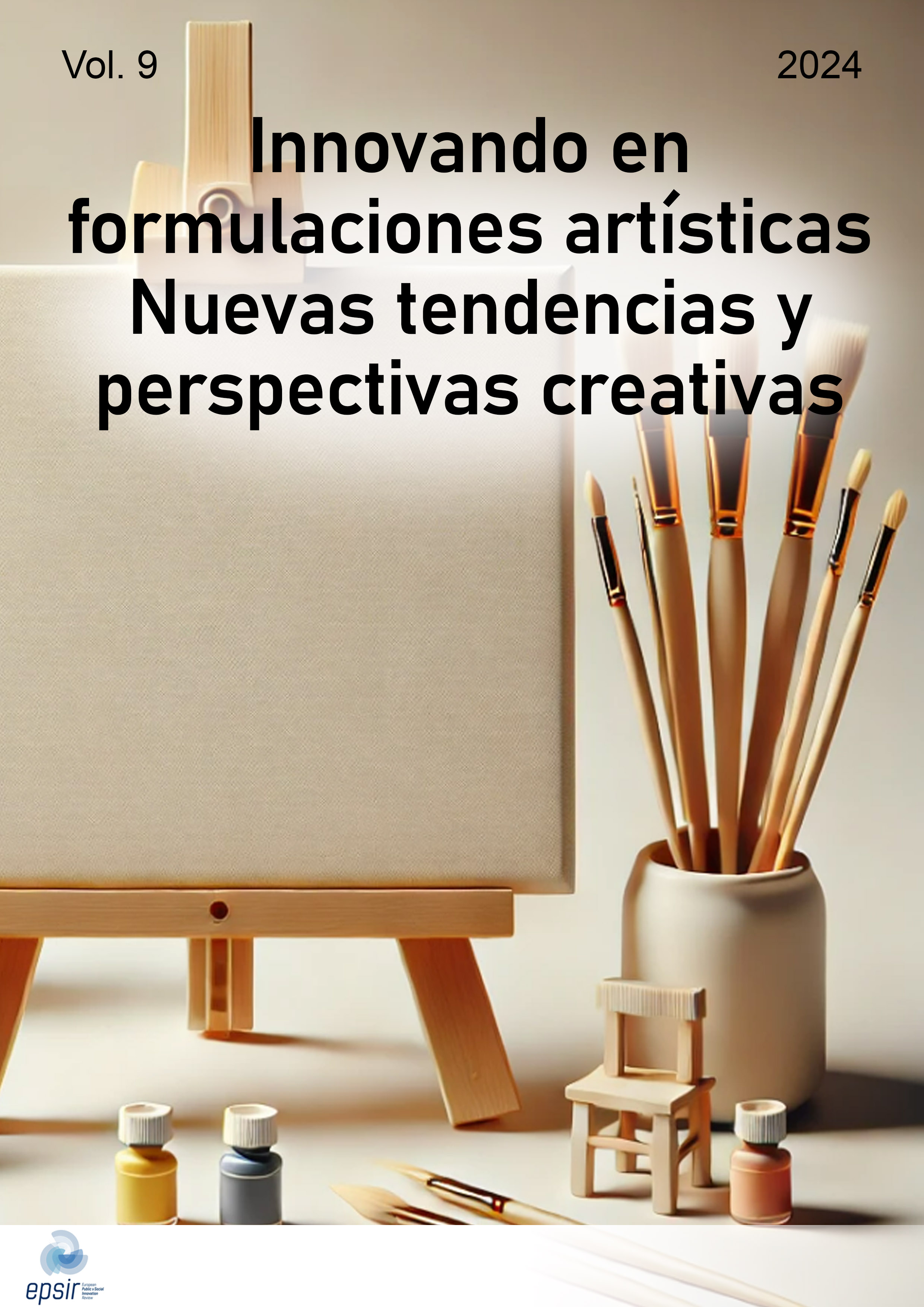Innovating in Artistic Formulations: New Trends and Creative Perspectives
DOI:
https://doi.org/10.31637/epsir-2024-1730Keywords:
Artistic innovation, Digital interactivity, Artificial intelligence, Virtual reality (VR), Contemporary CreationAbstract
This monograph explores how technological innovations are redefining artistic production and experience in a digitized world. It focuses on the impact of artificial intelligence, virtual reality and digital interactivity, which enable the active participation of the viewer and transform the traditional boundaries of art. It highlights the incorporation of AI as a creative tool, the creation of immersive experiences and sustainability in contemporary artistic practices. It also addresses the ethics and social challenges of art in the digital era, such as the integration of public art and participatory projects to generate social and environmental awareness. The monograph invites reflection on the future of art through new forms of expression such as video games and interactive representations, as well as the role of cultural institutions in the adoption of these technologies. It seeks to open an interdisciplinary dialogue on the transformations in the creation and dissemination of contemporary art.
Downloads
References
Baraybar Fernández, A., Baños Gonzalez, M. y Rajas Fernández, M. (2023). Relación entre Emociones y Recuerdo en Campañas Publicitarias de Servicio Público. Una Aproximación desde la Neurociencia. Revista Latina de Comunicación Social, 81, 1–33. https://doi.org/10.4185/RLCS-2023-1936 DOI: https://doi.org/10.4185/RLCS-2023-1936b
Boden, M. A. (2019). Artificial Intelligence: A Very Short Introduction. Oxford University Press. DOI: https://doi.org/10.1093/actrade/9780199602919.001.0001
Eco, U. (1979). Lector in fabula. La cooperación interpretativa en el texto narrativo. Lumen. [Traducción del 1981].
García-Carretero, L., Establés, M. J. y Pérez-Escoda, A. (2023). La representación de la Unión Europea en los medios españoles: Discursos y polarización a través de la crisis energética. Revista Latina de Comunicación Social, 81, 375–398. https://doi.org/10.4185/rlcs-2023-1932 DOI: https://doi.org/10.4185/rlcs-2023-1932
Murray, J. H. (2023). The Intersection of Art, Technology, and Society. Technology and Culture, 64(1), 89-108. https://doi.org/10.1353/tech.2023.0012 DOI: https://doi.org/10.1353/tech.2023.0012
Paul, C. (2023). Digital Art: World of Art series. Thames & Hudson.
Pérez Alonso-Geta, P. M. (2009). Creatividad e innovación: una destreza adquirible. Teoría de la Educación. Revista Interuniversitaria, 21(1). https://doi.org/10.14201/3165 DOI: https://doi.org/10.14201/3165

Downloads
Published
How to Cite
Issue
Section
License
Copyright (c) 2024 Alberto E. García Moreno, Daniel Becerra Fernández, Daniel Navas Carrillo

This work is licensed under a Creative Commons Attribution-NonCommercial-NoDerivatives 4.0 International License.
Authors who publish with this journal agree to the following terms:- Authors retain copyright and grant the journal right of first publication with the work simultaneously licensed under Creative Commons Non Commercial, No Derivatives Attribution 4.0. International (CC BY-NC-ND 4.0.), that allows others to share the work with an acknowledgement of the work's authorship and initial publication in this journal.
- Authors are able to enter into separate, additional contractual arrangements for the non-exclusive distribution of the journal's published version of the work (e.g., post it to an institutional repository or publish it in a book), with an acknowledgement of its initial publication in this journal.
- Authors are permitted and encouraged to post their work online (e.g., in institutional repositories or on their website) prior to and during the submission process, as it can lead to productive exchanges, as well as earlier and greater citation of published work (See The Effect of Open Access).



